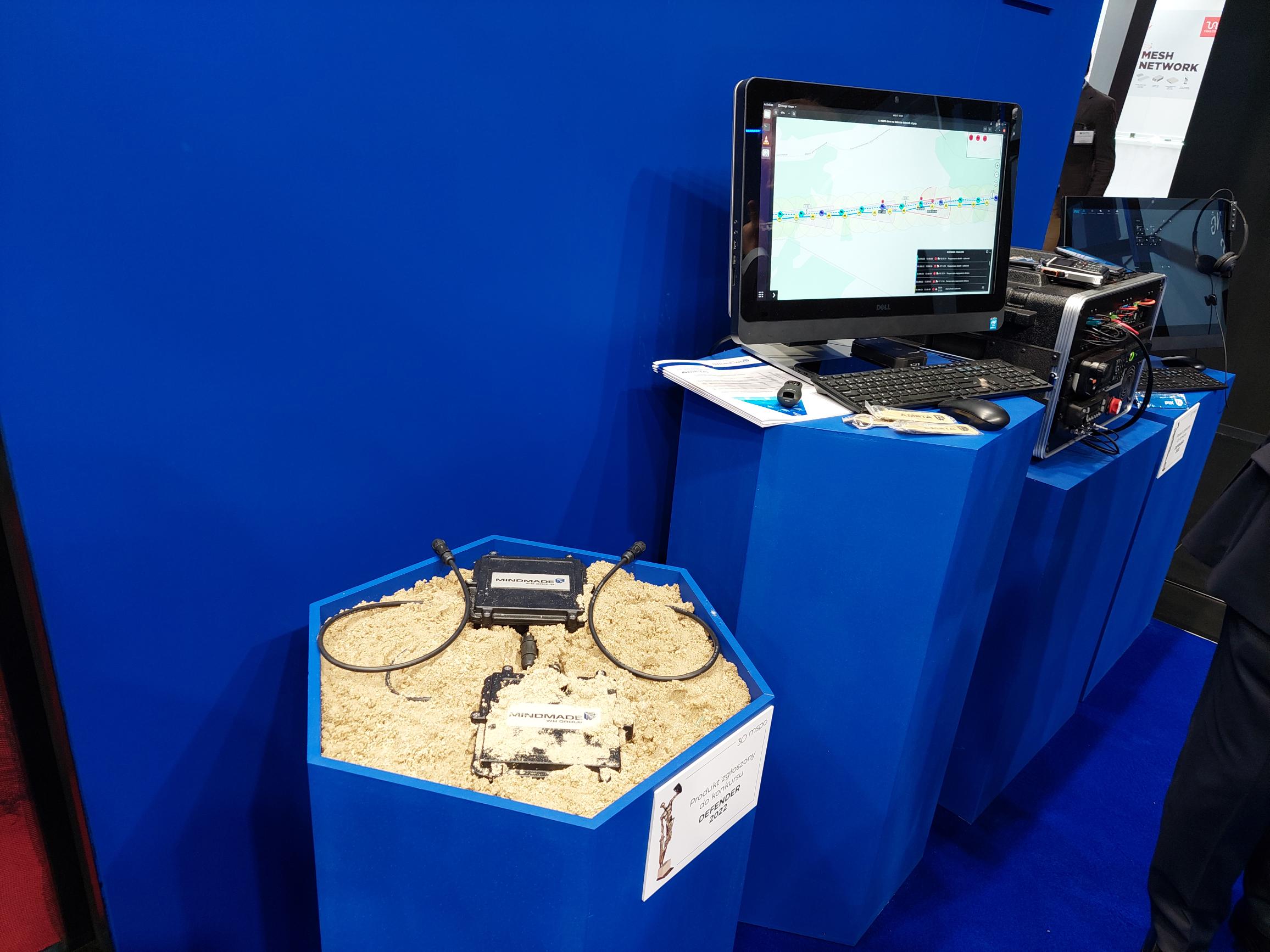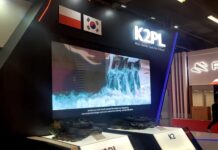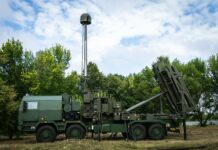Polish company WB Group presented the AMSTA Perimetric & Critical Infrastructure Protection System at MSPO 2022. It was designed to support various security services, both military and civilian in protection duties.
The main elements of AMSTA are small, omnidirectional, self-learning sensors, which are deployed in the field (usually buried approximately 40 cm underground). They detect and analyse seismic waves. It is available in two variants: cable (fixed) and wireless (mobile). Each can be adapted to the specific needs of the user taking into account local field conditions. In the cable variant, all sensors in the system are connected to each other via a fibre-optic network and are powered from a fixed power source. The wireless variant permits communication up to two km without using a repeater.
In order to detect people or vehicles and distinguish them from animals and natural sounds, the system has a database of sounds for comparison. However, it is also able to learn from monitoring its surroundings, allowing the system to eliminate interference of a permanent or periodic nature.
WB Group underscored that the system operates on the principle of “distributed intelligence”, which means that “each component conducts its own analysis of the received signatures, works independently of the others and has an autonomous power source and a GPS receiver”.
Information about a potential breach is transmitted to local outposts and security guards, who can use handheld terminals to receive additional confirmation from day or thermal cameras. Images can be shared with other foot and vehicle patrols in the field. Animals and people can be detected from 75 meters, while light vehicles from 300 m, and heavy vehicles from 500 m.
According to the manufacturer, AMSTA is intended to provide security for large and critical facilities, such as power plants, airports, or national borders. It is mobile, rapidly deployable and resistant to interference. AMSTA has relatively low logistical requirements and is based on an open, modular architecture, which means that it can be expanded and integrated with various systems, including other observation systems, 2D/3D radars, acoustic sensors or UAVs.












